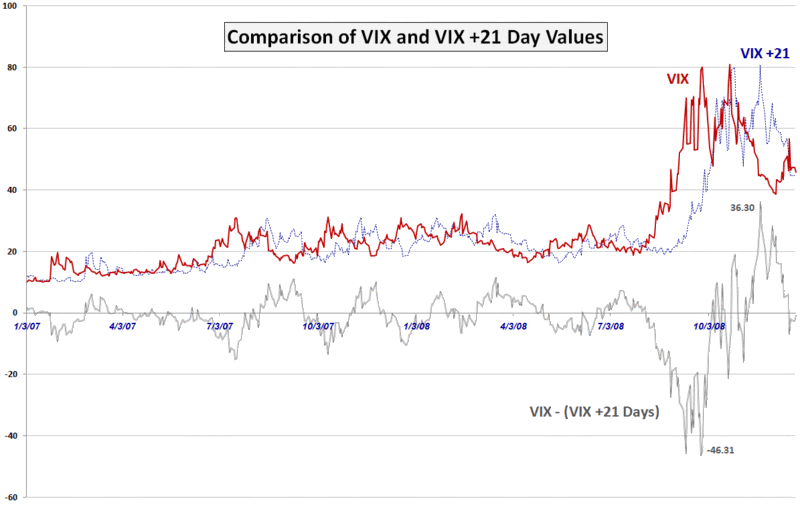Thinking About the New VIX ETNs
Last night I was contemplating how traders who are unfamiliar with futures should think about the forthcoming VIX ETNs relative to the VIX index that many are already (somewhat) comfortable with.
Since the VIX ETNs are based on VIX futures with constant maturities of one month and five months, it is important that an understanding of these new volatility products be rooted in an appropriate concept of time. The first analogy that sprung to mind was that traders might consider the difficulty of guessing not just where a stock will be in another month, but where the 30 day moving average of that stock will be a month hence. Why? Because the 30 day moving average is smoothed and will not react as quickly to changes in the price as the underlying will, just like VIX futures vs. the VIX. (VIX Futures: The One Picture to Remember drives home this point in a succinct and memorable fashion.)
The more I think about it, however, the more the idea of moving averages as a proxy for futures movement may be one step too far removed from the VIX ETNs to bring some clarity to these new products. For that reason, I pulled together two graphs of the history of the VIX going back to 2007. In the top graph, I have a simple plot of the VIX (red) and the value of the VIX 21 trading days later (dotted blue). The key takeaway is that a lot can happen in 21 days. While the cash/spot VIX and the VIX front month futures rarely vary by more than 5%, investors might be surprised to learn that the difference between the VIX and the VIX +21 days was frequently as much as 30-50% (6-15 points per the gray line) during the relatively calm 2007. In 2008 we learned that the VIX was capable of moving more than 20 points in one month with surprising frequency, even getting 46 points out of line in late September.
The bottom chart adds the VIX +105 days to the mix. Most investors should consider that while their mind is anchored on the cash/spot VIX plotted in red, the reality is that in 21 and 105 days, almost anything can happen. That idea, along with a healthy understanding of mean reversion, should help the non-futures investor think about the new VIX ETNs.


[graphics: VIX and More]


5 comments:
do you think VIX has a lot room to go down in near future , SIR
For a couple of months I have been saying that there is a good chance the VIX will find its way into the 20s during the first half of 2009.
I still think the odds of that prediction coming true are greater than 50-50, but I don't think it is going to happen in February -- probably not in March either.
Cheers,
-Bill
Bill, it seems that the images in your post are being trimmed on the right hand side. You should be able to limit the width in HTML.
I have to pull the source to a separate editor to see the whole image.
Any chance we can get the whole graph? I'd like to see where the comparisons have gone after August of 08.
I'm afraid my graphics are not compatible with all monitors. Sorry for the inconvenience.
The easiest workaround is to right click on the image, highlight "Copy Image Location," and paste the link into a new browser window.
I hope this helps.
Cheers,
-Bill
Post a Comment